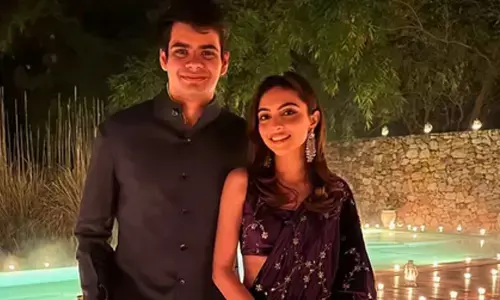Weaving the Future: Tradition, Empowerment, and Modern Design in the Handloom Industry

National Handloom Day, observed on August 7, pays tribute to India's rich tradition of handwoven textiles and promotes the handloom industry.
National Handloom Day, observed on August 7, pays tribute to India's rich tradition of handwoven textiles and promotes the handloom industry. Established in 2015 to commemorate the Swadeshi Movement, this day highlights the significance of indigenous products and the pivotal role handwoven textiles played in India's struggle for independence. It serves as a reminder to celebrate the artistry of handwoven fabrics while supporting the livelihoods of numerous weavers and artisans. The handloom sector is a major economic activity in India, second only to agriculture, providing direct and indirect employment to approximately 3.52 million handloom workers, with 2.55 million being women. This sector contributes nearly 15% to the country's cloth production and has a substantial impact on export earnings, with India producing 95% of the world's handwoven fabric.
Preserving Cultural Heritage through Handloom
The handloom industry plays a crucial role in preserving cultural heritage by maintaining traditional processes and designs. The Toda tribe of the Nilgiris, known for their unique embroidery, produces Toda shawls exclusively made by women. This tradition not only preserves the tribe's cultural identity but also ensures the survival of their distinctive craft. Similarly, the Ikat technique, popular in Telangana and Odisha, involves intricate resist dyeing to create timeless patterns. Gujarat's Tangaliya shawls, with their characteristic raised dot designs, exemplify the rich legacy of India's handloom heritage.
Celebrating Tradition and Empowerment
Efforts to preserve traditional handloom crafts through direct collaboration with artisans across India are crucial. This commitment to sustainable fashion is evident in collections featuring Nilgiri Toda shawls, Andhra Pradesh Ikat, and Gujarat's Tangaliya weave. Toda shawls, crafted exclusively by Toda women, represent India's rich handloom heritage. Supporting these artisans by providing a platform to showcase their skills empowers them economically and socially while preserving their cultural identity.
Empowering Women Artisans
According to the Handloom Census 2019-20, India has approximately 3.52 million handloom workers, with 2.55 million being women. The sector employs 2.67 million weavers, 72% of whom are women. Handicraft exports (excluding handmade carpets) reached $1.80 billion between April 2023 and March 2024. The industry is projected to employ 6.89 million craftspeople, with a significant number of women. Empowering women artisans is crucial for the handloom sector's sustainability. By providing skill development and market access, artisans can achieve economic independence and gain recognition. This support enhances their communities through improved education and living standards. Efforts to provide training and resources help preserve traditional techniques and ensure their continuation for future generations.
Integrating Tradition with Contemporary Fashion
Indian fashion is increasingly embracing handloom textiles, seamlessly integrating them with modern design to create garments that appeal to contemporary consumers while preserving cultural heritage. This fusion of tradition and modernity is essential for keeping the handloom sector vibrant and relevant in today’s fast-paced world. Presenting handloom textiles in innovative ways encourages consumers to appreciate and invest in handloom products, thereby promoting sustainable fashion and supporting artisan communities.
The Role of Consumers in Sustaining Handloom
As National Handloom Day approaches, it’s essential to recognize and celebrate the collective efforts of artisans, designers, and consumers in preserving India’s rich textile heritage. Supporting handwoven products and making informed choices are key to sustaining these traditional crafts. The future of the handloom industry relies on collaboration among artisans, brands, and consumers. By valuing the skill and artistry of India’s weavers, we bridge tradition and modernity, fostering a sustainable fashion landscape.
Weaving the Future: Tradition, Empowerment, and Modern Design in the Handloom Industry
This National Handloom Day, let us honour the craftsmen who protect India’s cultural heritage while also recognizing efforts at the forefront of sustainable fashion. Such dedication demonstrates how contemporary design can enhance traditional crafts, ensuring a bright future for handlooms. Consumers play an important role in this process. By supporting these products and appreciating handcrafted excellence, we help sustain handloom weaving, empower artisans, and enrich our cultural heritage. Together, we can create a fashion industry that honours both heritage and innovation.














